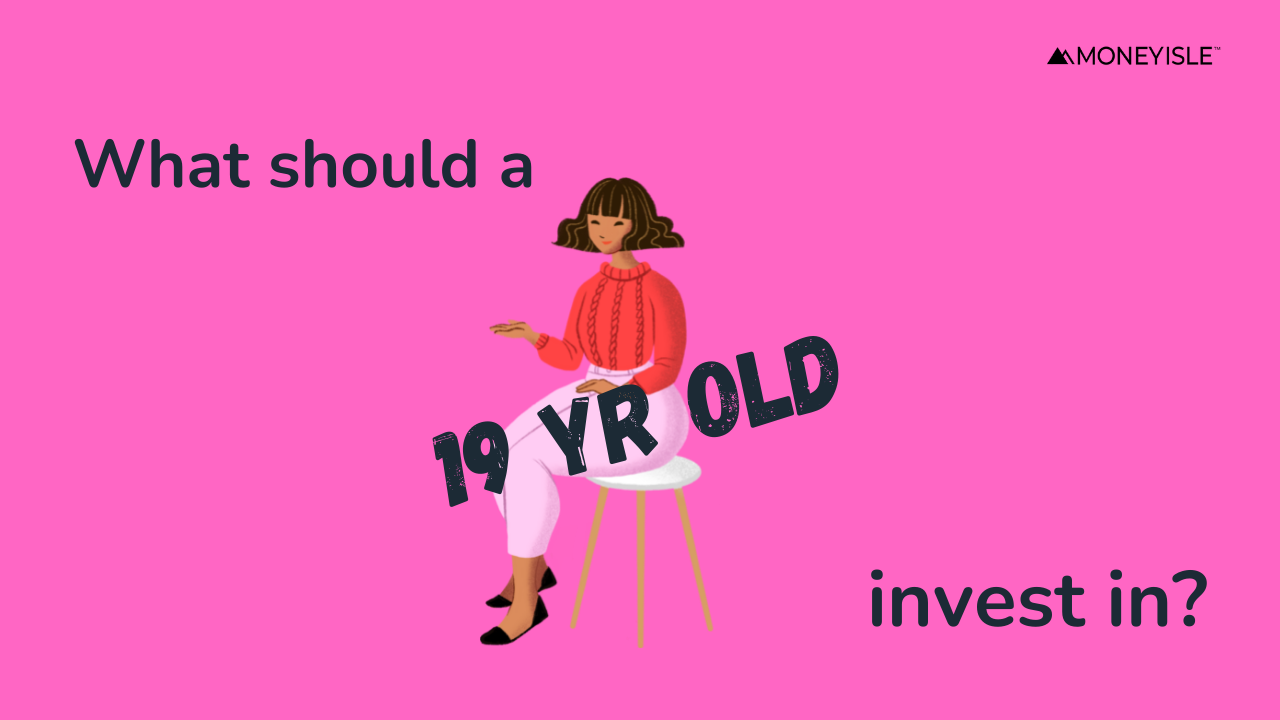Being young and investing aren’t those concepts that seem to go hand-in-hand. If anybody ever wants to start investing at 19 years, it seems like there aren’t a lot of options available just because investing at 19 years isn’t done often.
If you start investing at 19 years, retirement feels a lifetime away. Youngsters practically don’t even think about it, because you don’t have enough financial options at 19.
However, investing at the age of 19 has a lot of significant benefits. Not only are you giving yourself a financial headstart, but you are also saving up for times of uncertainty. This is why you can start investing at a young age and make yourself more stable financially.
In this article, we will be mentioning some of the best options for you to explore
What’s the need to invest at 19?
Let’s look at investing statistically.
If today, you were to start investing ₹5000 monthly in mutual funds for the next 10 years with an expected rate of return per annum of 14%, the future value of your SIP investment would be around ₹13 Lacs right now.
Investing is such a tool that offers returns in the long run. More importantly, you can even start investing at a young age, since there are plenty of options to invest in.
Whether you plan to save for your college, for your parents, or for any uncertainty in the future, investing is always that kind of an option that you can always resort to.
How to start investing at a young age?
Since you are looking for the best ways to start investing young, we have the following few steps to help you get started:
1. Understand the investment basics
As you gear up towards investing young, it’s extremely important to figure out where to invest. You can practically start investing in:
Stocks – Investing in stocks allows you to own the shares of a particular company. As the company grows, the value of the stocks goes up and so do your investments. There are some stocks that also share profits as dividends. However, stocks in the short term also have the chance of losing value.
Bonds – Bonds are loans to a company or a government agency. As the company or the agency pays a fixed rate of interest for the bond, these bonds become a fixed income asset. Bonds usually are less risky than stocks yet they don’t grow in value as compared to stocks.
Mutual Funds – Investing in mutual funds is the safest option for young people. Mutual funds allow you to practically lend money to different companies. As these companies invest on your behalf, you are entitled to returns that are equally distributed with the people that invest with you in these companies as well.
2. Figure out your investing capacity
Before you even start investing, you need to know how much money you can spare for investing every month. This is important because you want to make sure you are setting aside some money every month so as to keep adding to your investments.
However, before you decide on investing everything you have, lay down the following options for yourself:
Keep a minimum monthly investment – Investments make you disciplined with your money. More importantly, it helps you set aside some amount of money every single month to save for your future. However, it can also open doors for irregularities as you can invest more than normal at times. This essentially breaks your rhythm and you end up investing more than required. Try to keep a minimum investment amount and stick to that only.
Save yourself an emergency funding – Since uncertainties are a part of life, you need to make sure that you are saving some money to tackle uneventful circumstances as well. This is why you can spare a few months’ expenses in a savings account. As you are investing young, you also have the option of opening a savings account and saving some money for yourself in order to use it whenever required.
Pay off your high-interest debts – Debts could easily eat away at your savings. It makes no sense that you can invest for a 10% potential return when you are paying 15% interest on your debts or credit cards as a teen. This is why you can take care of the debts first.
3. Make your investments for the long term
Before you invest, know that investing is a long term process. This means that if you want results, you practically have to stay invested for at least a period of 5 years. In fact, the longer, the better.
Since investing at a young age is a major leap, it’s practically a huge advantage as well since you get to invest and save for the long term.
Investing at 19 can practically bring you tangible results at the age of 25. Your investments would have a lot more value as the years’ progress. The more time you give them to mature, the better returns you would expect in the future.
What to invest in at 19?
Investing at the age of 19 is a major decision. With limited knowledge, resources, and capital, it’s important to know where to put your money.
Of course, the risk factor is associated with all types of investments. But you can always settle with such options that pose a lesser risk than usual.
So where can you invest?
Mutual Funds – Mutual funds are a great way to get started. They are not just suitable for youngsters, but even for working classes that want to start saving for their future. At MoneyIsle, you can start investing in mutual funds right away and invest in some of the best future options.
What you should remember is that mutual funds do have annual fees as well. Before you invest, you can verify the different charges incurred.
ETFs – If you are not too pleased with the minimum investments of mutual funds, you can always start off with an Exchange Traded Fund (ETF). ETFs are a really ideal method to get started with lesser money to invest.
ETFs also allow investors to purchase mutual funds at a single share price. This price typically is lower than the minimum investment of the fund.
Conclusion
Investing anywhere could be very exciting, especially when this investment money starts adding up every month.
However, it could also make you prone to risks and losses, especially if you are investing in those stocks that are not promising enough.
Picking the wrong companies to invest in could also make you lose your money. This is why you can pick up a low-cost index fund and create a diversified portfolio for yourself.
Learn how a company you’re interested in investing in works and operates. Learn about their previous financial records and project and whether you’d be able to take advantage of their growth as well.











